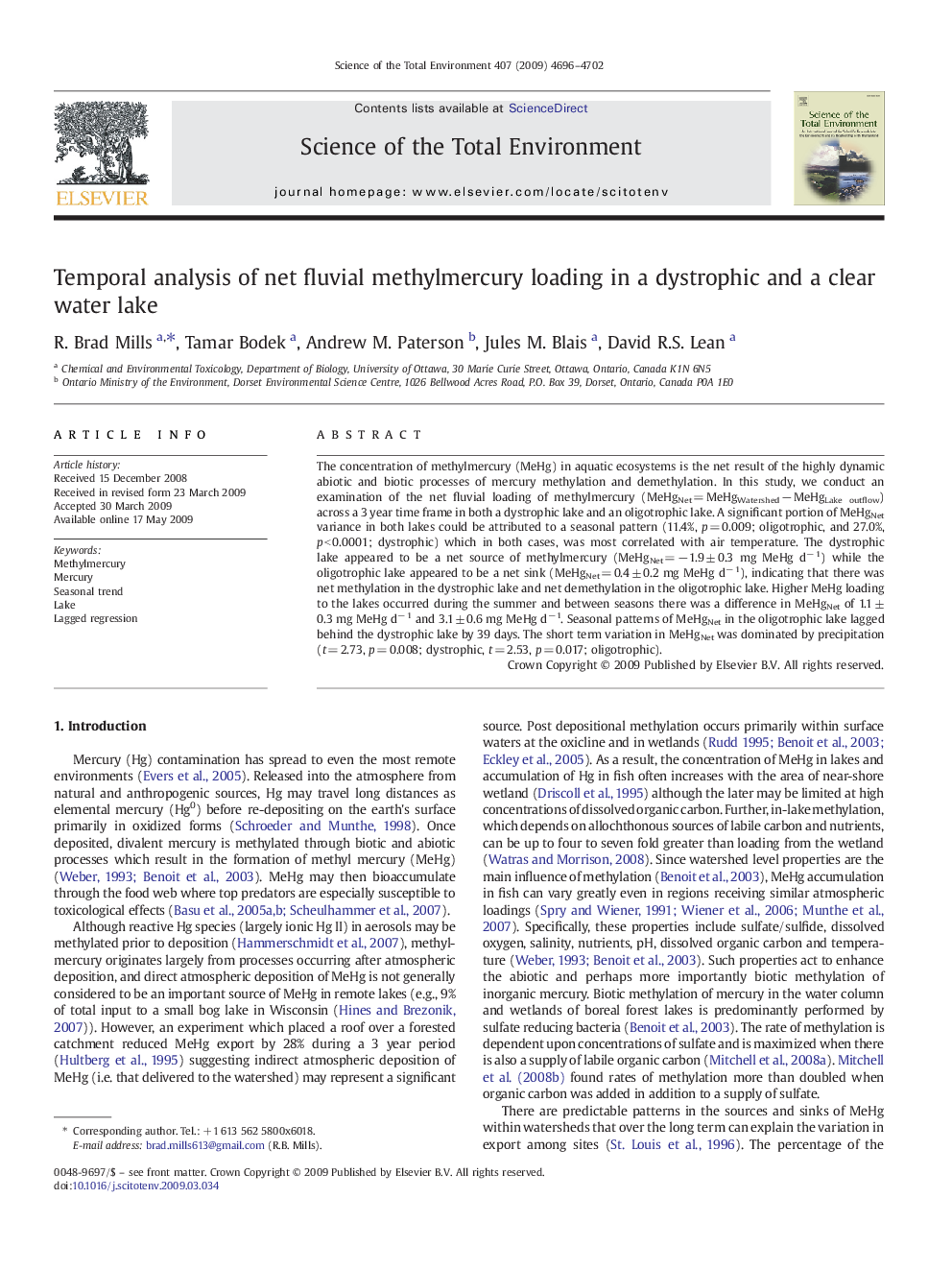| Article ID | Journal | Published Year | Pages | File Type |
|---|---|---|---|---|
| 4431263 | Science of The Total Environment | 2009 | 7 Pages |
The concentration of methylmercury (MeHg) in aquatic ecosystems is the net result of the highly dynamic abiotic and biotic processes of mercury methylation and demethylation. In this study, we conduct an examination of the net fluvial loading of methylmercury (MeHgNet = MeHgWatershed − MeHgLake outflow) across a 3 year time frame in both a dystrophic lake and an oligotrophic lake. A significant portion of MeHgNet variance in both lakes could be attributed to a seasonal pattern (11.4%, p = 0.009; oligotrophic, and 27.0%, p < 0.0001; dystrophic) which in both cases, was most correlated with air temperature. The dystrophic lake appeared to be a net source of methylmercury (MeHgNet = − 1.9 ± 0.3 mg MeHg d− 1) while the oligotrophic lake appeared to be a net sink (MeHgNet = 0.4 ± 0.2 mg MeHg d− 1), indicating that there was net methylation in the dystrophic lake and net demethylation in the oligotrophic lake. Higher MeHg loading to the lakes occurred during the summer and between seasons there was a difference in MeHgNet of 1.1 ±0.3 mg MeHg d− 1 and 3.1 ± 0.6 mg MeHg d− 1. Seasonal patterns of MeHgNet in the oligotrophic lake lagged behind the dystrophic lake by 39 days. The short term variation in MeHgNet was dominated by precipitation (t = 2.73, p = 0.008; dystrophic, t = 2.53, p = 0.017; oligotrophic).
